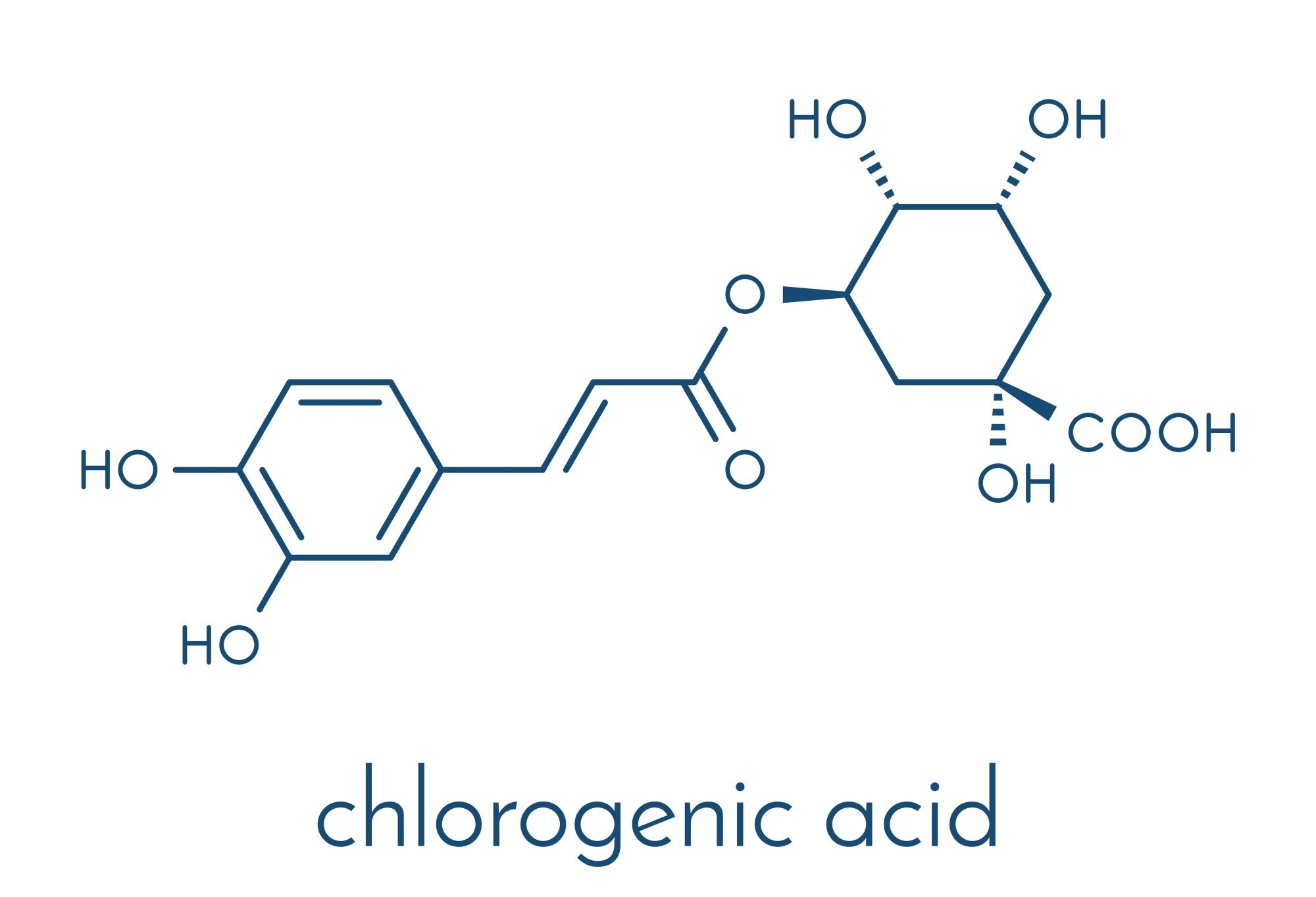Chlorogenic acid is a medicinally significant phenolic compound, and its sensitive detection is important for scientific and medical purposes. An article published in the Materials Chemistry and Physics presented the construction of a glassy carbon electrode (GCE) as a chlorogenic acid detection platform. This GCE platform was based on neodymium oxide nanoparticle-decorated carbon nanotubes (Nd2O3@CNTs/GCE).

Study: Ultrasonication-assisted construction of neodymium oxide nanoparticles-carbon nanotubes based voltammetric platform for the sensitive determination of chlorogenic acid in tomato juice and fizzy drink. Image Credit: StudioMolekuul/Shutterstock.com
Nd2O3 nanoparticles were prepared by adding ammonia solution to neodymium nitrate (Nd(NO3)3) solution via ultrasonication, followed by the calcination of the resulting product at 600 degrees Celsius for 4 hours. Subsequently, the Nd2O3 nanoparticles were decorated on multi-walled (MW) CNTs under sonication to prepare a GCE platform sensitive to chlorogenic acid.
Nd2O3@CNTs/GCE nanoplatform increased the peak response and decreased the separation of cathodic and anodic peak potentials (ΔEp), resulting in an improved voltammetric behavior for chlorogenic acid. Compared to the existing electrodes, the as-constructed Nd2O3@CNTs/GCE nanoplatform had a higher surface area with more active sites. Furthermore, the proposed voltammetric platform yielded a low limit of detection (LOD) and high sensitivity for chlorogenic acid compared to the literature values.
Analytical Methods Towards Detection of Chlorogenic Acid
Chlorogenic acid is a phytochemical found in vegetables, fruits, and other food and beverages. It is investigated for regulating blood pressure, weight loss, blood sugar, and neurological diseases. Thus, a sensitive method for the analysis of chlorogenic acid is of interest in both scientific and medical fields.
High-performance liquid chromatography (HPLC) in combination with other analytical methods (mass spectroscopy, ultraviolet (UV) spectroscopy, and amperometric detection), liquid chromatography, infrared spectroscopy, UV-visible spectroscopy, electrochemiluminescence, ultrasound-based microextraction, and electrochemical methods are commonly used quantification methods for quantification of chlorogenic acid in samples. However, these analytical techniques have complex working mechanisms and require professional personnel for operation.
Voltammetry is a widely used electrochemical technique for detecting chlorogenic acid in samples. Various modified electrodes were developed for constructing voltammetry devices with high sensitivity, selectivity, and low LODs. Moreover, CNT-modified electrodes showed good stability and excellent conductivity against a wide range of chemicals.
In addition to CNTs, nanoparticle-modified electrodes are promising materials for preparing novel voltammetric platforms, exhibiting good selectivity and sensitivity in various applications. Thus, electrochemical platforms based on metallic nanoparticle-modified CNTs exhibit excellent electrochemical and analytical performances. To this end, nanoplatforms based on niobium and CNT nanoparticles showed good selectivity, high sensitivity, and outstanding electrocatalytic activity for quantifying chlorogenic acid.
Ultrasonication-Assisted Construction of Nd2O3 Nanoparticles-CNTs Based Voltammetric Platform
Previous studies mentioned that modifying the electrodes with MWCNTs increased the sensitivity of electrodes towards chlorogenic acid. Combining CNTs with nanoparticles increased the sensitivity and selectivity of voltammetric platforms in various applications. Thus, nanoparticles decorated MWCNTs were fabricated in the present work and subsequently used for constructing the electrodes with enhanced sensitivity toward chlorogenic acid.
Moreover, glassy carbon paste electrodes with single-walled (SW) CNTs decorated with silica (SiO2)- Nd2O3 nanoparticles were previously applied for quantifying levodopa (L-DOPA). CNT- Nd2O3 nanocomposites were reported to catalyze the thermal decomposition of ammonium perchlorate more efficiently than pure Nd2O3 nanorods, suggesting the efficiency of multifunctional nanocomposites compared to pure nanoparticles.
The present work aimed to synthesize Nd2O3 nanoparticles via dropwise addition of Nd(NO3)3 solution followed by ultrasonication and calcination at 600 degrees Celsius for 4 hours. Subsequently, MWCNTs were decorated with Nd2O3 nanoparticles under sonication to prepare a sensitive GCE platform for chlorogenic acid detection.
The proposed Nd2O3@CNTs/GCE electrode showed outstanding performance in chlorogenic acid detection. The results revealed the working range of electrodes between 5.0×10-8 and 6.1×10-5 moles with a LOD of 6.2×10-9 moles. Thus, the prepared voltammetric platform yielded low LOD values and high sensitivity for chlorogenic acid compared to previously reported values in the literature.
Additionally, the proposed Nd2O3@CNTs/GCE-based voltammetric platform was also used to quantify the chlorogenic acid in çamlica brand fizzy drinks and locally grown bunch cherry tomato juice. The results revealed 1.51 (in çamlıca fizzy drink) and 13.1 (in cherry tomato juice) milligrams per liter concentration of chlorogenic acid.
Conclusion
GCE modified with Nd2O3 nanoparticles and MWCNTs were used to construct a robust electrode. The as-constructed Nd2O3@CNTs/GCE system showed excellent voltammetric behavior towards chlorogenic acid with increased peak response and decreased ΔEp.
The working range of the Nd2O3@CNTs/GCE system towards the detection of chlorogenic acid was between 5.0×10-8 and 6.1×10-5 moles with a LOD of 6.2×10-9 moles. The prepared voltammetric platform was practically applied to determine chlorogenic acid in çamlica brand fizzy drink and locally grown bunch cherry tomato juice.
The results revealed that the concentrations of chlorogenic acid in çamlica fizzy drink and locally grown cherry tomato juice were found to be 1.51 and 13.1 milligrams per liter, respectively. Thus, the proposed Nd2O3@CNTs/GCE-based voltammeter was demonstrated as an efficient analytical tool for detecting chlorogenic acid in given #samples.
Reference
Düzmen, S and Aslanoglu, M. (2022). Ultrasonication-Assisted Construction of Neodymium Oxide Nanoparticles-Carbon Nanotubes Based Voltammetric Platform for the Sensitive Determination of Chlorogenic Acid in Tomato Juice and Fizzy Drink. Materials Chemistry and Physics. https://doi.org/10.1016/j.matchemphys.2022.126651
Disclaimer: The views expressed here are those of the author expressed in their private capacity and do not necessarily represent the views of AZoM.com Limited T/A AZoNetwork the owner and operator of this website. This disclaimer forms part of the Terms and conditions of use of this website.